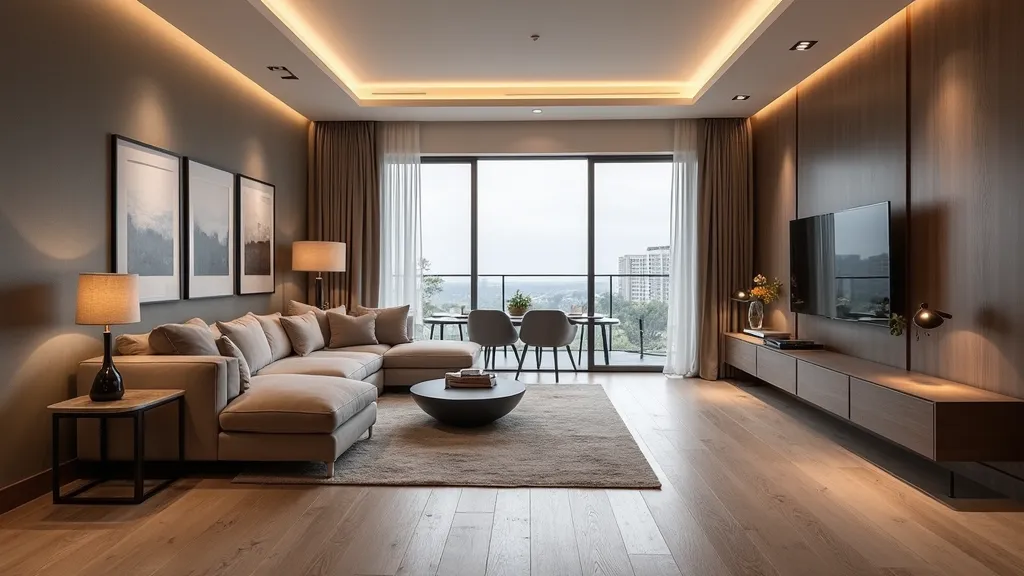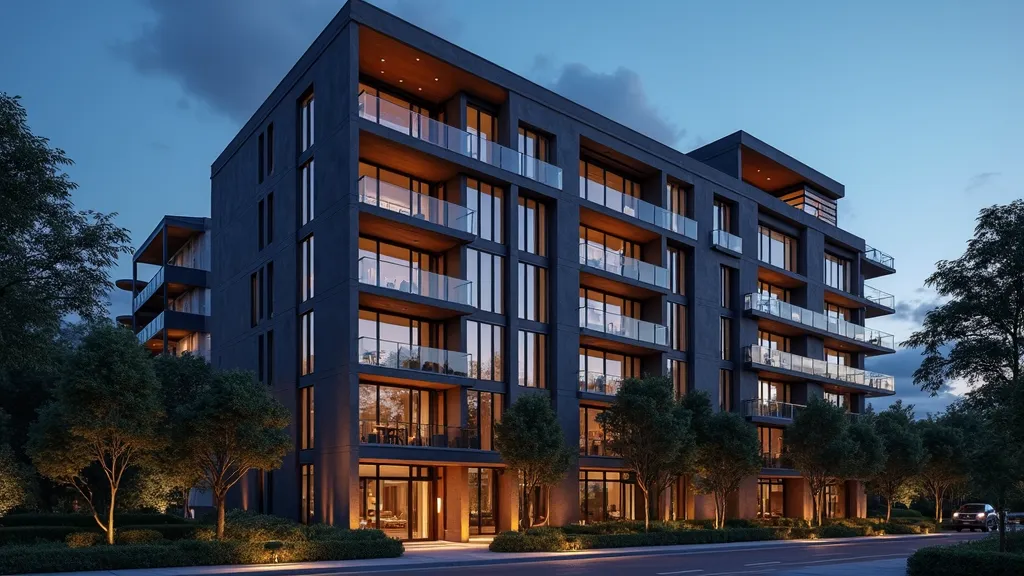Luxury apartments represent the pinnacle of residential living, combining high-end amenities, premium locations, and sophisticated design. These residences cater to individuals seeking comfort, style, and exclusivity. This article delves into the features defining luxury apartments and what sets them apart in the real estate market.

Luxury apartments have long been synonymous with opulence, comfort, and exclusivity. These living spaces are designed to provide a superior standard of living through premium amenities, top-tier architecture, and prime locations. As urbanization accelerates, the demand for luxury apartments continues to grow, driven by individuals seeking not just a place to live, but an experience that reflects their lifestyle and personal tastes. The appeal of luxury apartments extends beyond mere living space; they embody a lifestyle choice that emphasizes quality, sophistication, and an elevated social status.
In a world where the hustle and bustle of daily life can often feel overwhelming, luxury apartments offer a sanctuary that combines both style and comfort. From the moment you step inside, you are enveloped in an ambiance of elegance and tranquility. The intricate details of the design, the high-quality materials used, and the thoughtful layouts all contribute to an experience that is both luxurious and functional. The essence of luxury apartments lies in their ability to create a unique living environment that resonates with the aspirations of those who inhabit them.
What truly defines a luxury apartment? It begins with the architecture. These residences often feature cutting-edge designs that blend modern aesthetics with functionality. High ceilings, expansive windows, and open floor plans are common, creating a sense of spaciousness and light. Moreover, luxury apartments are typically located in desirable neighborhoods, offering residents access to cultural landmarks, fine dining, and shopping districts. The architecture is often complemented by high-end finishes such as hardwood floors, custom cabinetry, and designer fixtures that enhance the overall aesthetic appeal.
Another key feature is the level of personalization available to residents. Many luxury apartments offer customizable options, allowing individuals to choose finishes and layouts that suit their personal tastes. This level of customization is a hallmark of luxury living, ensuring that each space feels unique and tailored to the needs of its occupant. Additionally, sustainability has become a significant consideration in the design of luxury apartments, with many incorporating eco-friendly materials and energy-efficient systems that appeal to environmentally conscious buyers.
Beyond aesthetics, luxury apartments offer a plethora of amenities designed to enhance the living experience. State-of-the-art fitness centers, rooftop pools, concierge services, and private cinemas are just a few examples. These features are not mere add-ons but integral components that distinguish luxury living from standard residential offerings. For instance, a well-equipped fitness center allows residents to maintain an active lifestyle without the need to travel to an external gym, while a rooftop pool provides a serene escape and stunning views of the city skyline.
In addition to these amenities, many luxury apartments feature communal spaces that foster a sense of community among residents. These may include lounges, game rooms, and outdoor terraces, where neighbors can socialize and build relationships. Furthermore, innovative technology is increasingly integrated into luxury living, with smart home systems that enable residents to control lighting, temperature, and security with ease. This blend of technology and luxury creates an environment that is not only comfortable but also convenient and secure.
Understanding the real estate market dynamics for luxury apartments is crucial for both potential buyers and investors. The market is driven by various factors including location, demand for exclusivity, and the overall economic climate. In urban areas, the scarcity of space amplifies the value of luxury apartments, making them a sound investment for those seeking good value. Additionally, the rise of remote work has influenced the luxury apartment market, as individuals prioritize quality living spaces that accommodate both leisure and professional needs.
Market trends indicate that luxury apartments are increasingly catering to a demographic that values experiences over possessions. This shift has led to the emergence of properties that offer unique lifestyle amenities such as wellness centers, art galleries, and co-working spaces, appealing to a younger, affluent audience. Furthermore, the globalization of wealth has introduced international buyers into the luxury apartment market, further driving demand and competition.
| Feature | Description |
|---|---|
| Location | Proximity to city centers, cultural landmarks, elite schools, and vibrant neighborhoods. The desirability of the neighborhood significantly influences market value. |
| Amenities | Includes high-end facilities such as gyms, pools, concierge services, private cinemas, and wellness centers. These amenities create a lifestyle of convenience and luxury. |
| Design | Modern architecture featuring spacious layouts, premium finishes, and an emphasis on natural light. The design often incorporates sustainable materials and smart home technology. |
| Security | 24/7 security personnel, surveillance systems, and secure access. Enhanced security measures ensure peace of mind for residents. |
Luxury apartments are defined by their high-end amenities, prime locations, and sophisticated design. They offer a superior living experience compared to standard apartments, characterized by attention to detail and quality.
Yes, they can be a good investment due to their potential for appreciation and demand in premium markets. However, it's important to research market trends and location-specific factors, as well as understand the long-term value associated with luxury properties.
Typical amenities include fitness centers, pools, concierge services, private cinemas, and more, aimed at enhancing the residents' lifestyle. In addition, some luxury apartments may offer unique amenities such as wine cellars, spa services, and valet parking.
Location significantly impacts the value, with properties in city centers or near cultural landmarks often commanding higher prices. The prestige associated with a neighborhood and its accessibility to essential services also play crucial roles in determining value.
Living in a luxury apartment transcends the mere act of residing in a high-end space; it embodies a lifestyle that is characterized by convenience, exclusivity, and a strong sense of community. Residents of luxury apartments often enjoy a curated lifestyle that includes access to exclusive events, networking opportunities, and tailored services that cater to their individual needs. The lifestyle is often complemented by a focus on wellness, with many properties offering fitness classes, yoga sessions, and spa services that promote health and relaxation.
Furthermore, the social aspect of living in a luxury apartment cannot be understated. Many luxury buildings foster a sense of community through organized events such as cocktail parties, art exhibitions, and holiday celebrations. These gatherings provide residents with the opportunity to connect with their neighbors, fostering relationships that can enhance their living experience. The community aspect is particularly appealing to younger residents, who value social interaction and networking within their living environment.
While the market for luxury apartments continues to thrive, it is not without its challenges. One of the primary concerns is the potential for oversaturation in certain markets, particularly in urban centers where new developments are rapidly emerging. As the supply of luxury apartments increases, it can lead to heightened competition among properties, potentially driving down rental prices and property values.
Additionally, economic fluctuations can have a significant impact on the luxury real estate market. During times of economic uncertainty, potential buyers may be more hesitant to make significant investments, and luxury rentals may experience higher vacancy rates. This uncertainty underscores the importance of market research and understanding local economic conditions before investing in luxury properties.
Looking ahead, several trends are shaping the future of luxury apartment development. One of the most notable trends is the increasing emphasis on sustainability. As environmental concerns become more prominent, luxury developers are integrating green building practices and eco-friendly materials into their projects. This includes energy-efficient systems, sustainable landscaping, and the use of renewable resources, appealing to buyers who prioritize environmental responsibility.
Another trend is the incorporation of technology into luxury living. Smart home technology is becoming increasingly prevalent, allowing residents to control various aspects of their home environment through mobile apps and voice-activated systems. This trend not only enhances convenience but also aligns with the tech-savvy nature of many luxury apartment residents.
Additionally, the concept of mixed-use developments is gaining traction. Luxury apartments that are part of larger communities featuring retail, dining, and entertainment options provide residents with a comprehensive living experience that meets all their needs within close proximity. This trend reflects a shift towards urban living that emphasizes walkability and accessibility, catering to a generation that values experiences over traditional suburban lifestyles.
The allure of luxury apartments is not confined to one geographic area; it has a global appeal. Major cities around the world, such as New York, London, Paris, and Hong Kong, are known for their prestigious luxury apartment offerings. However, emerging markets are also witnessing a rise in luxury developments as global wealth increases. Cities in Asia, the Middle East, and Latin America are becoming hotspots for luxury living as affluent individuals seek high-end residences in vibrant urban centers.
International buyers often view luxury apartments as not just homes, but as investment opportunities. The appeal of owning a luxury property in a prestigious location can provide both personal enjoyment and financial returns. As a result, many luxury developments are marketed to a global audience, further driving competition and innovation in the industry.
Luxury apartments are more than just residences; they are a statement of lifestyle and success. With their blend of opulence, convenience, and exclusivity, they continue to attract individuals who value quality and comfort. As the demand for such properties grows, understanding their features and market dynamics becomes essential for potential buyers and investors alike. The evolving landscape of luxury living reflects broader societal trends, emphasizing the importance of community, sustainability, and technological integration in defining the luxury living experience.
As we look to the future, the luxury apartment market is poised to adapt to changing consumer preferences and economic conditions. Whether through innovative design, enhanced amenities, or a focus on sustainability, luxury apartments will continue to redefine the standards of living, offering an unparalleled lifestyle that resonates with those who seek the best in life. The essence of luxury living lies in the details, and as developers continue to push boundaries, the possibilities for luxury apartments are boundless.


